In this post of our insects series, I want to introduce you the hidden heroes of the ecosystem closely. Even their duty is a dirty thing for most of us, even they aren't doing this for the sake of our or the natures wellness, they are helping all the living in a way that is way more than their bodies can take. Yes, our heroes are Dung beetles...
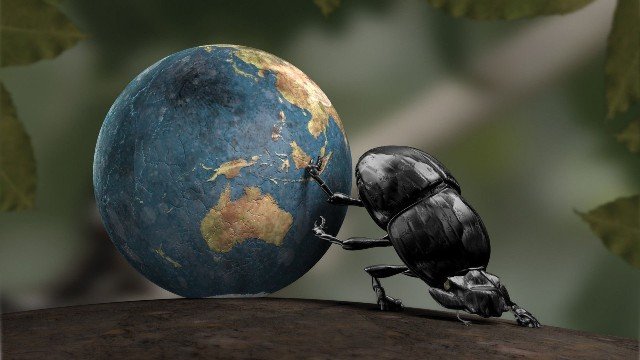
Some of us might have seen them pushing a ball of feces to move it somewhere. Actually, only a part of dung beetles works like this. Most of them consume the feces right at the spot and transport it by digging tunnels under the ground.
They are insects which obtains the portion or the whole of their nutritional needs from feces. Most of this type of insects are classified in the beetles (Coleoptera) order, they are from Scarabaeidae family, and subfamily of Aphodiinae and Scarabaeinae.
The majority of Scarabaeinae subfamily's species of more than 5.000 obtain their nutritional needs from feces and because of this, this subfamily is sometimes referred to as "the real dung beetles". Also, Geotrupidae which is another family of the Coleoptera is fed with feces. They are usually called " soil-digger dung beetles".
General Specialties
They have hard shells, also their shells are metallic shiny color. Their sizes can reach up to 60mm. They can make feces into spheres with the 30 fingers they have. They can live in many different habitats.
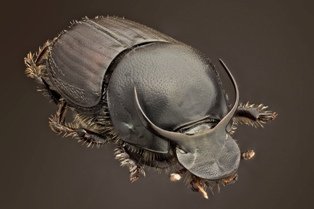
These hi-man insects which can carry up to 10 times of their weight are also super fast at the same time. The strongest known dung beetle is the male Onthphagus Taurus. It can carry up to 1,141 times of its own mass...Amazing!
Even though pushing the ball of feces with their hind legs causes some trouble in finding direction and though they need to go towards the shortest distance in the shortest time -because it wouldn't want its rivals to steal it- they do have a good navigation skill. They go on top of the ball from time to time and adjust the orientation and find their way by straws.
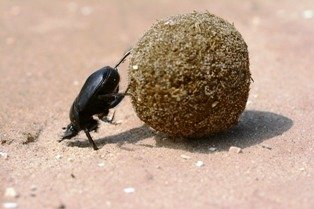
Antic Egyptians thought this transportation ritual of them looked like the motion of the sun and was considered holy. Of course, not only their ability to find directions but also putting their eggs inside the ball of feces and babies emerging from there also supported their belief of re-birth.
Although they are known as feces ball carriers, many Dung beetles do their job right where the feces is. In results of experiments done, it was seen that in the first 15 minutes after an elephant feces just hit the ground dung beetles reaching a number of thousands have already reached there. And in half an hour, this number reached around 12 thousand. I suppose this is the speed that competition brings...
Man dung beetles will carry the ground feces by digging a hole from inside the feces to the ground. They are also good tunnel diggers at the same time.
Although there are some consume feces, their main nutrition is mushrooms and plant roots.
Their lifecycle:
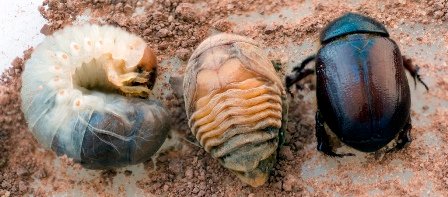
Their life cycle is as; Egg, larvae, pupae, and adult.
The mother putting the eggs in the feces ball is also ensuring the security by doing this. Think about it, what kind of a predator would want to get close to a feces...
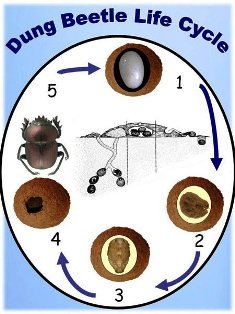
Moreover, she will ensure the development of the offsprings with the rich nutrition feces. And when the time comes, she will put the feces ball in water and ensure the offsprings to spread around from the melting feces.
They are the best of insects when it comes to being a family.
Their contribution to the Ecosystem
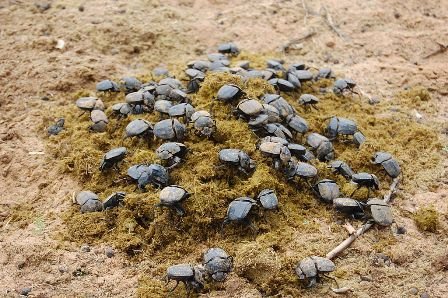
They do the most important contribution to the nitrogen cycle. They ensure that the nitrogen in the feces of plant-eating animals will be re-absorbed by the soil as fast as it can.
They increase the fertility of the soil with the tunnels they dig in the soil. Thanks to these tunnels, the rainwater absorption, and airing of the soil will get easier.
The parasites in their feces: Most of the eggs of Gastrointestinal parasites will be transmitted to the host's feces. Later on, the eggs will crack and will turn into free moving larvas. They will start to develop at this stage and until a stage of a disease. By removing the feces completely and fast, dung beetles will help in preventing this.
And by the same logic, they will prevent the disease from spreading by destroying the feces.
Dung beetles, which has this interesting habit and which are consisting of thousands of species were able to draw humans' attention throughout history.
They were symbolized in 3 different ways in Antic Egypt.
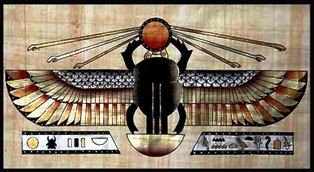
• With Ra's Khphere symbol as creation of cosmic universe
• As the Sun; They were associated with Sirius system which gives life to the Solar system itself
• And they were associated with reincarnation.
)
reference:
